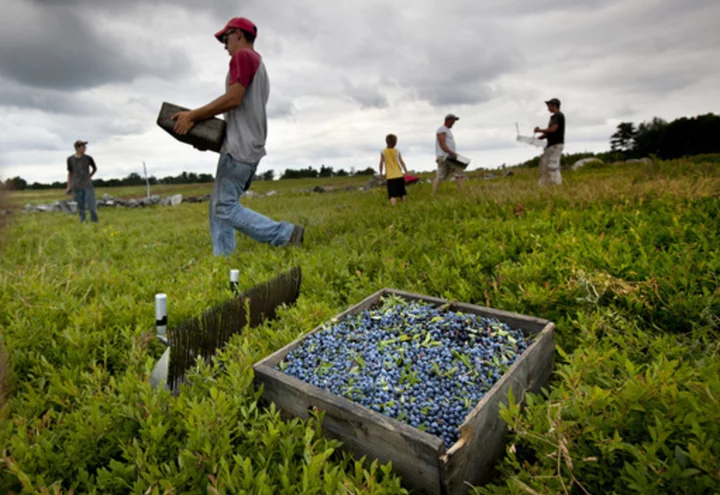PORTLAND, Maine (AP) — The nation's production of wild blueberries slipped a bit last year as some growers contended with drought.
Wild blueberries are smaller than their cultivated cousins and are widely used in frozen and processed products such as smoothie mixes. Maine is the only state in the U.S. where the blueberries are harvested commercially.
The 2022 harvest of the blueberries fell a little more than 25% to 77.5 million pounds, according to data from the U.S. Department of Agriculture. That was still a relatively strong year, and the third-most since 2017, according to state records.
The wild blueberries are harvested from late July to early September. Drought made production more difficult in the state's midcoast region, but that was less of a problem in Downeast Maine, where the vast majority of the blueberries grow, said Eric Venturini, executive director of the Wild Blueberry Commission of Maine.
“It was a stellar year in 2021. Everything worked perfectly, the weather conditions were perfect, Mother Nature cooperated and we ended up with a fantastic crop,” Venturini said. “Last year we were hit by drought in some portions of Maine.”
Prices for the blueberries stayed fairly high at about 72 cents per pound. That was slightly less than 2021, but more than any other year since 2014, according to state records.
Blueberry growers in Maine have had to contend with numerous challenges in recent years, including erratic weather, fickle markets, climate change and competition from Canada, where the same blueberry grows. They have also had to fend off an invasive fruit fly from Asia that was first detected in the U.S. about 15 years ago.
Members of Maine's blueberry industry and state agriculture officials have tried to grow interest in the fruit as a “superfood,” in part because of its high levels of antioxidants. The wild blueberry is Maine's official state berry, and it's the subject of the promotional Wild Blueberry Weekend on Aug. 5 and 6.









